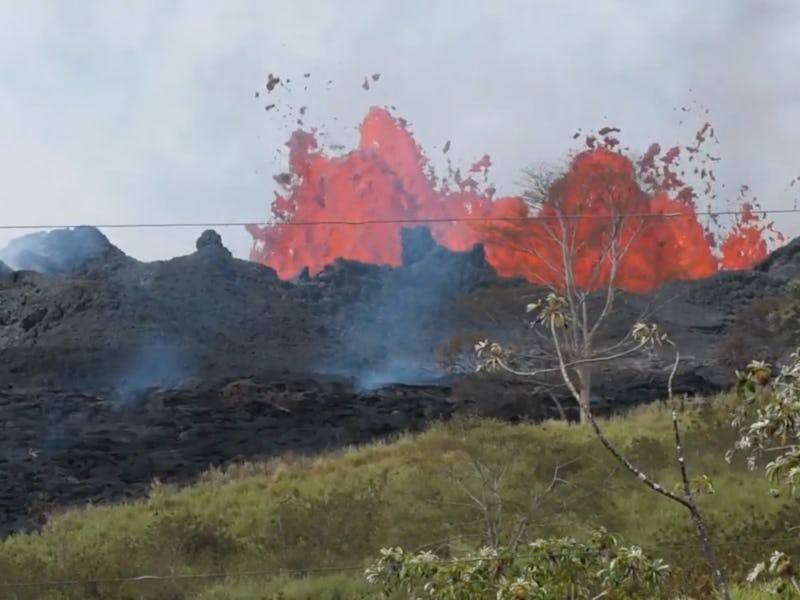Hawaii Volcano Kilauea: Mayor Responds After His Home Is Devoured by Lava
Harry Kim lost his second home in the eruption.

Hawaii’s Kilauea volcano eruption has claimed a home owned by Hawaii County mayor Harry Kim, officials confirmed to Inverse on Tuesday. The ongoing lava flow, moving in a fast and erratic manner as it moves past its first month, has been spurred by strong earthquake activity in the area, with lava creating new land and wiping away Kapoho Bay in the process.
Kim’s office confirmed to Inverse that the volcano destroyed the mayor’s second home, located in Vacationland. The volcano first erupted on May 3, and geological activity has produced lava ever since. A 6.9 magnitude earthquake hit the island of Puna just one day after the first eruption, and further activity in the following weeks sent ash around 30,000 feet into the air. At a meeting with residents at Pahoa High on Tuesday evening, Kim said: “In the darkest of times I ask you to stick with us. Together, all of us, as a community. We have the will, we will make it better. Hang in people, we’ll get it done.”
The eruption has stunned experts ever since its beginning. Officials from the U.S. Geological Survey claimed that the eighth and most recent fissure is the most powerful, while scientist Wendy Stovall claimed last week the lava was reaching its hottest temperatures. Stovall told reporters that “we are pretty much tapping mantle temperatures right now,” a layer of the Earth that can reach temperatures of up to 2,570 degrees Fahrenheit.
“It’s incredibly saddening,” Jason Hills, whose father lives in Kapoho, told HawaiiNewsNow. “Kapoho was one of the last special places along that entire coastline. Kapoho Bay was just a little calm water gem where people could play, swim, hang out in the tide pools. It was green and beautiful, great tradewinds, and now it’s just a big hunk of lava rock.”
The summit area of Kilauea was rocked by 500 quakes over a period of just 24 hours over the weekend, and experts are still unclear what happens next. Brian Shiro, a supervisory geophysicist at the USGS Hawaiian Volcano Observatory, said that the quakes were the highest rates ever measured at the summit.
As the recovery effort is underway, experts claimed on Monday that aftershocks may continue.